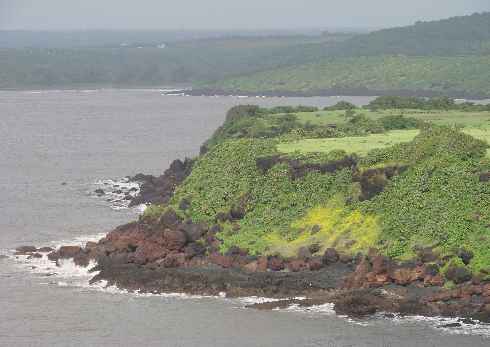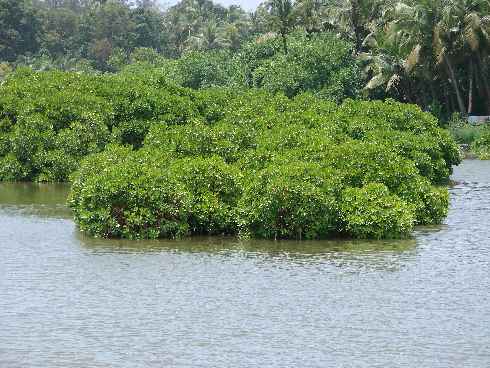As expected, French President Nicolas Sarkozys India visit early December 2010 has materialized in signing of General Framework Agreement for building the European Pressure Reactors (EPRs) for Jaitapur Nuclear Power Park (JNPP) which is being set up in Konkan region of Maharashtra, in Ratnagiri district.. However, many issues remain unresolved as admitted by Indias Prime Minister Manmohan Singh who reportedly said there are issues of pricing ..these are matters of negotiations which is linked to insurance cost and which, in turn, is linked with nuclear liability concerns.
But there are many other issues which the officials dont seem to be much concerned about. There are environmental concerns and safety risks besides displacing people and ruining their livelihood, says Dr Sulabha Brahme, renowned economist and environmentalist from Pune. As build-up to Sarkozys visit, the protests against JNPP had intensified last few months. On the eve of French Presidents visit to India, project affected people led a Court Arrest procession to JNPP site in Madban to express strong opposition to this nuclear project.

The Madban plateau is a complete ecosystem. Pic: Tetali P.
However, the peaceful march turned violent when the Police tried to stop the procession since protestors defied Section 144 of IPC. Some 3000 protestors including well-known people like former High Court Judge B G Kolse-Patil, Pravin Gavankar of Madbans Janhit Sewa Samiti, Dr Vivek Bhide of Konkan Bachav Samiti, fisherfolk leader Amjad Borkar, Vaishali Patil of Konkan Bachav Samiti, and others were arrested by the Police. The Shiv Sena also jumped the bandwagon protesting you cant build a project breaking heads of the natives..
To pave the way for agreement on JNPP during French Presidents visit, Union environment minister Jairam Ramesh, who had earlier accepted the environmental concerns about JNPP, was sort of forced to give environment clearance with 35 conditions. Even now Ramesh reportedly admits, It was not an easy task... It is a balancing act. I do not expect all environmentalists to be happy with this decision. I am prepared for quite a few brickbats. Also he himself pointed out that his ministry has no jurisdiction over radiology emission a major concern among locals and environmentalists. The Indian Express reported this on 29th November.
Ramesh voices the same concerns as environmentalists and reportedly said while announcing the clearance in Mumbai on November 29, 2010, I am aware that the Jaitapur power project is coming up in an eco-sensitive area. There are other power projects coming up on a thin strip of coast of Raigad, Ratnagiri and Sindhudurg with power generation adding up to 33,000 MW. There are port and mining projects also lined up in this area. It is absolutely essential to get an assurance from the Maharashtra government to study the cumulative carrying capacity of the region and prepare a report.
And yet Narayan Rane, the then revenue minister of Maharashtra state had reportedly said, Some outsiders who cant tolerate progress are opposing the project, not local farmers. In fact, it is these very farmers who, under the leadership of a Madban resident Pravin Gavankar formed Janhit Sewa Samiti in 2006 when they received notices of land acquisition from the government.
Stiff opposition
On January 22, 2010, 2335 farmers from four villages - Madban, Karel, Niveli and Mithgavane from Ratnagiri district of Konkan region of Maharashtra, refused to accept cheques of compensation for their 938 hectares of land forcibly acquired by the government through the Nuclear Power Corporation of India. This was for the Jaitapur Nuclear Power Park (JNPP). Only 56 landowners, most of who are settled in Mumbai-Pune for decades, accepted this compensation and got rid of their land.
Last October, the state government established a committee to revise the compensation and announced a rehabilitation package that includes Rs 2 crore with a recurring amount of Rs 25 lakh for each of the four villages; permanent job for farmers kin or Rs 5 lakh; and an amount equivalent to 375 to 750 days of agricultural wages for lifetime to compensate for the loss of livelihood.
The villagers burnt the copies of this package shouting slogans we dont sell our mother and beggars accept money (for their motherland). On October 29, 2010 more than 2000 farmers and fisher folk assembled despite prohibitory orders, to court arrest to protest against the proposed nuclear power project on their fertile land.
The Enron fiasco of 1990s has had its impact on stirring opinion against ecologically disastrous power, mining and other polluting industrial projects that are being thrust on the narrow coastal strip of Konkan. The Janhit Sewa Samiti got in touch with the Enron protesters of Dabhol to learn from their experience as they had undergone the same fate in early 90s.

•
Nuclear bill: who bears brunt
•
Poor record on nuclear safety
Environmental impact assessment glosses over reality
Of the six nuclear reactors of 1650 MW each, two are proposed to be set up in the first phase at a cost of Rs 60000 crore. For environment clearance, National Environmental Engineering Research Institute (NEERI) was asked to prepare EIA. NEERI is a constituent of Council of Scientific & Industrial Research (CSIR), New Delhi which conducts research and developmental studies in environmental science and engineering. For one of the impacts i.e. risk of ecological damage, NEERI asked College of Forestry, Konkan Krishi Vidyapith (KKV) to prepare a report.

![]() Sulabha Brahme, noted economist and writer-activist has thrown her lot with the resistance movement. Pic: Tetali P.
Sulabha Brahme, noted economist and writer-activist has thrown her lot with the resistance movement. Pic: Tetali P.
Says Brahme, After careful study of KKV report, we found that it was lacking in appropriate study design and careful scientific approach. For example, the floristic study was carried out without frequent field visits in all seasons to collect plant material samples. Says Premanand Turalkar from Madban, I recorded my objection on how KKV was entrusted a job for which they have never undertaken a survey of the region to be studied. Its report shows that there is not a single well in Madban village. Then what water we villagers drink, seawater?
And then in the absence of methodologically sound survey and scientific data analysis, KVV, NEERI and hence NPCIL came to the conclusion that Madban plateau is barren wasteland with no ecological value. Look at the collage of these photos of Madban and do you call this wasteland with no ecological value? quips Dr Brahme.
In fact, the NEERI-KVV team has not realized that the Madban plateau, green forests along the hill slopes, wetland habitat and thick mangroves along the creek, the Arjuna river and the creek waters rich in marine life together form an integrated and unique ecosystem supporting wide variety of flora and fauna. The NEERI-KVV study has not considered the essential part i.e. the plant animal interactions, ethnobotanical and anthropological studies highlights an appeal for signature campaign by the Janhit Sewa Samiti. Parallel studies by the Bombay Natural History Society have shown that the project will cause substantial environmental damage. According to National Oceanography Goa, Jaitapur comes under earthquake-prone zone and hence a nuclear power plant is not advisable.
Environment minister Jairam Ramesh admitted to the deficiencies in this NEERIs EIA, when a delegation met him in May 2010 to bring to his notice the facts about Madban and ecological disastrous impact of a nuclear power plant there.
But political compulsions seem to have driven Ramesh to give green signal to the project just before Sarkozys India visit.
Policy drive to boost nuclear-based generation
Notwithstanding all this and people's stiff opposition, the central government is going ahead with an agreement for nuclear reactors from the French company Areva during the French President Sarkozys visit to India, even when the design of the plant is not yet ready. Doubts are also being raised about its techno-economic viability and the former chairperson of the Atomic Energy Regulatory Board, A Gopalakrishnan, questions the wisdom of India entering into a contract with Areva for the EPR which is unproved and is plagued by delays and cost overruns."
After 1978, no new Nuclear Power plant has come up in the USA. The 1986 Chernobyl accident almost put a stop to atomic energy projects in western countries (except France & Finland) especially in the face of stiff protests by their citizens on the issues of radiation. Thus American and Western companies turned towards Asian countries to palm off their technology and many nuclear power plants came up in China, Japan, South Korea and India.

Madban's Rich Mangroves. Pic: Tetali P.
Since India is not ready to sign NPT, USA found it difficult to transfer nuclear technology and hence brought in a special Hyde Act to pave a way into Indian nuclear energy market. Under the garb of augmenting energy availability, Indian Government has decided to expand nuclear power generation in the country from 4120 MW to 63000 MW by 2032.Coastal regions are natural choice for nuclear power plants since they require huge amount of water for cooling activities besides using sea route for imported machinery, fuel and other supplies says Brahme. Accordingly, most of 31 new nuclear power plants have been approved along both the east and the west coastal belt in India.
This is how the largest ever nuclear power project in Asia of 9900 MW capacity was approved at Madban.
Public hearing turns farce
With such concocted EIA to suit the decision makers, the NPCIL went ahead to acquire the land during October 9-December 1, 2009 and started soil testing activities. Besides, land will be acquired for laying transmission lines which means yet another body blow to other villages along the transmission route, says Pravin Gavankar.
A public hearing on proposed project by the NPCIL on May 16, 2010 at Madban was a mere farce. Around 1000 people attended. The mandatory requirement of providing EIA report in local language to affected villagers a month in advance was not met. Only Madban Gram Panchayat received a copy a month ago in English and just four days before the public hearing in Marathi, thus violating the Environment Protection Act 1986 and Environment Protection Rules 2006 & 2009.
The officials present at this public hearing, Madhukar Gaikwad, the collector MPCB, Ratnagiri, project official Shashikant Dharane and project advisor Umesh Kilkarni were at loss when specific queries were made by the people. Dr Vivek Montero of Indian School of Social Sciences took on these officials saying, You do not know cost of nuclear energy per megawatt of these reactors; you do not know cost of uranium, you do not know cost of storage facility. Then on what basis, you claim that the electricity will be provided at competitive rates? We have given you detailed calculation (which NPCIL officials agreed to) based on capital power cost of Rs 18 crore per MW i.e. Rs 9 per unit as against NPCILs current Rs 2.24 per unit! So NPCIL should do its homework first before taking any kind of hurried decisions.
On question of nuclear waste, Dharane said that it will be encapsulated under the concrete cover for 100 years and the government is searching for such a site. Dr Monteiro noted that radioactive waste is highly dangerous for 10000 years. And America, France, Finland and other countries do not have such depositories now. Without these depositories, the Indian Government is putting future generation of the whole country to expose from nuclear radiations for thousands of years! He added that these plants are not designed for protection against terrorism.
Commenting on the environmental study at the hearing, Amjad Borkar of Fishermens Society said, NEERI appears weak in study of fisheries. Sea water will be drawn in these six nuclear reactors and the same at higher temperature will be released in to the sea at 1.5-2.5 km distance which will cause sea water temperature to rise up to 5 degree Celsius. This will completely destroy fisheries. NEERI which wrote reports sitting on the table is completely oblivious of sea level and depth. The sea gets deeper as you move southward from Mumbai. The Maharashtra government has restricted fishing activities up to 10 fathoms which is within 2 km where the hot sea water from reactors will be released. So NEERI has not thought of fisher folk.























